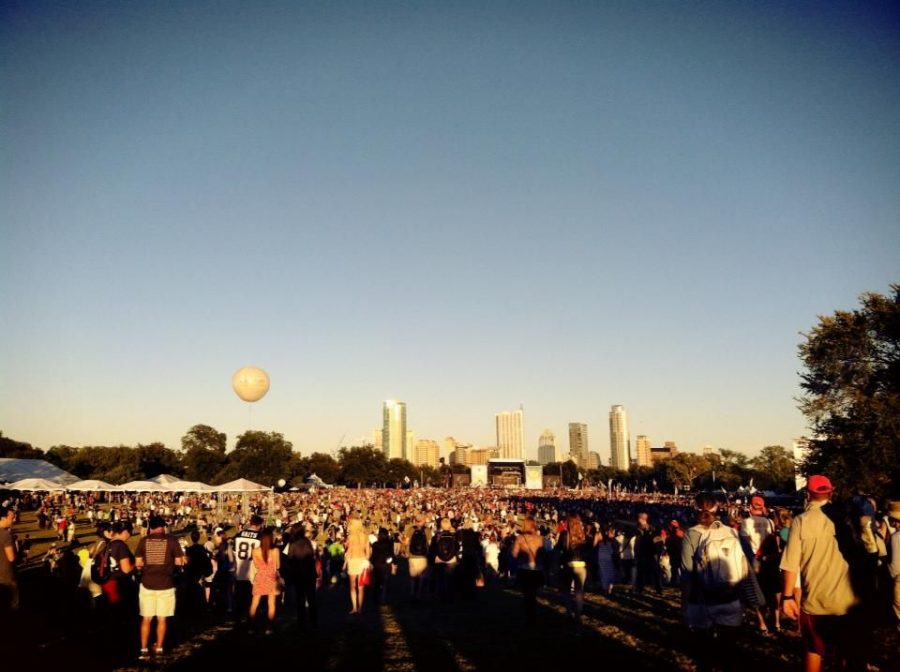Big festivals, other events increase human trafficking activity in cities
Formula One and South by Southwest bring a lot of traffic to Austin — but this isn’t the only type of traffic these occasions bring to the city. Human traffickers, with victims in tow, also flock to these big, annual events hoping to capitalize on the influx of tourists and business these gatherings garner.
Kay Firth-Butterfield, the chief officer of the Ethics Advisory Panel at the Austin-based artificial intelligence company Lucid, knows a lot about this issue. Firth-Butterfield, who is also an adjunct professor in the criminal justice department at St. Edward’s University, teaches a class at the college about human trafficking.
“So there is a group of traffickers who specialize in big sporting events, because, sadly, when you get a congregation of men by themselves you get prostitutes, and those people may or may not know some of these people are not prostitutes — but some of these people are being forced to have sex against their will,” Firth-Butterfield said. “So what these traffickers specialize in is moving their stable of girls around big events, like the Super Bowl, political conventions, boxing matches, F1, South by Southwest or Austin City Limits — wherever you’ve got some sort of big festival happening.”
Human trafficking is a domestic problem within the United States, with roots in many large cities across the nation.
Furthermore, recent data accumulated by the National Human Trafficking Resource Center (NHTRC) shows that the vast majority of documented human trafficking victims — 36.6 percent — are actually American citizens.
In regards to Texas specifically, the cities of Austin, Houston, El Paso and Dallas are a few of the major cities in the state which serve as hotspots for human trafficking. According to a report titled “Assessing the Threat of Human Trafficking in Texas” released by the Department of Public Safety in 2014, “709 human trafficking-related incidents, 609 reported victims and 176 suspects (were) arrested in Texas between January 1, 2007, and January 9, 2014.”
At first glance, these numbers might seem small. However, due to the clandestine nature of human trafficking and the difficulty of investigating and documenting these crimes concretely, these numbers are telling. Statistical data relating to human trafficking, whether it be sex- or labor-based, does come with certain caveats.
Firth-Butterfield elaborates on the problem of human trafficking statistics:
“One of the problems about statistics is that it’s really difficult to be able to put numbers on something that is such a moveable thing,” she said. “What we do know is that different types of traffickers have different modus operandi.”
For the past three years, Texas has ranked second in the nation for incoming signals, which “refers to incoming communications with the NHTRC and can take the form of phone calls, online tip reports or emails,” according to the NHTRC.
Yet most residents of Texas, especially those who frequent the city regularly — like 22-year-old University of North Texas student Michael Houser, who travels from Denton to Austin to visit family — aren’t even aware of this shadowy problem.
“It’s shocking to see that human trafficking can exist in the seemingly safe communities we live in,” Houser said.
The process by which a woman may become trafficked depends on the situation, but many women fall prey to charming men who shower them with praise and then turn on them when they least expect it.
“They identify someone who doesn’t have a boyfriend or who doesn’t have much self-esteem, and then a charming guy moves in on a girl treats her well and ‘grooms her,’” Firth-Butterfield said. “He takes her out to dinner, buys her things and makes her feel fantastic, and bam, then he takes her home and home is suddenly very different from what she expected.”
Once a victim is trapped in a sex trafficking situation, they are a part of a complicated machine that works because there are several levels of control within the organization.
“People tend to think of a sex slave and their owner, but with sex slavery, it doesn’t work like that,” Firth-Butterfield said. “So you will have a slave master, but you’ll also have somebody to identify the victim; somebody to groom the victim; someone to keep the victim in order — they might be the person who beats the victims or arranges the gang rapes or whatever — and then you’ve got the person who oversees all that who takes the money and pays for various things.”
According to Firth-Butterfield, human trafficking is not a phenomenon that appeared out of nowhere — it is the result of a flawed cultural system.
“I think that a lot of the sex slavery is enabled by our culture, so we need to value women and children more,” Firth-Butterfield said. “I hope that we value children in America but maybe we need to have a different attitude towards women. So there are some cultural things that we need to begin to change.”







